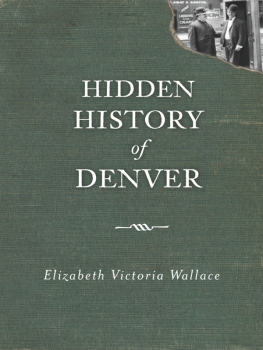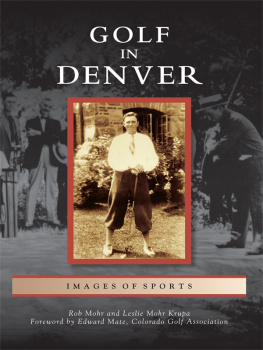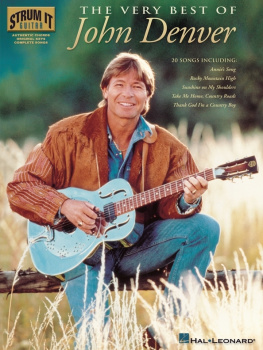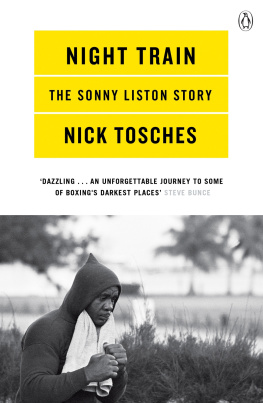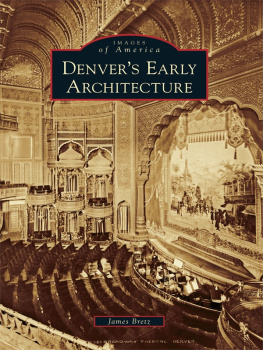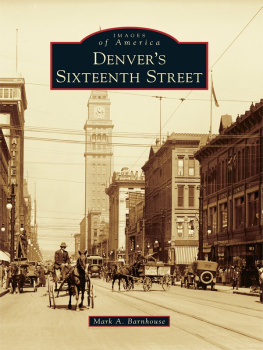
Published by The History Press
Charleston, SC 29403
www.historypress.net
Copyright 2011 by Elizabeth Victoria Wallace
All rights reserved
First published 2011
e-book edition 2013
Manufactured in the United States
ISBN 978.1.62584.177.3
Wallace, Elizabeth Victoria.
Hidden history of Denver / Elizabeth Victoria Wallace.
p. cm.
print edition ISBN 978-1-60949-350-9
1. Denver (Colo.)--History--19th century. 2. Denver (Colo.)--Biography. I. Title.
F784.D457W35 2011
978.883--dc23
2011037318
Notice: The information in this book is true and complete to the best of our knowledge. It is offered without guarantee on the part of the author or The History Press. The author and The History Press disclaim all liability in connection with the use of this book.
All rights reserved. No part of this book may be reproduced or transmitted in any form whatsoever without prior written permission from the publisher except in the case of brief quotations embodied in critical articles and reviews.
CONTENTS
FOREWORD
The history of the West is the history of the footloose. Some were fleeing the law. Some became the law. Others sought fortunes and either gained or lost themor both. The history of Denverhere encompassing 1858 to the 1940sis a rich stew of colorful characters.
Who were they? Why did they come to Denver? And what did they do when they got here? Elizabeth Victoria Wallaces Hidden History of Denver is one look at those answers. The book includes stories from the descendants of those early settlers in which they describe the lives and dreams of their ancestors. Also included are rare and never-before-published photographs and sketches of gangsters, gypsies, rodeo stars and suffragettes.
The founding of Denver, like the founding of many western cities, is more about the ongoing reinvention of self than the discovery of one. And speaking of frontiers, this work represents another kind of reinvention: the independent local history, written by an experienced freelance author. As such, it represents an early settling in the still unexplored landscape of twenty-first-century writing. I recommend it.
James LaRue, Director
Douglas County Libraries
August 2011
ACKNOWLEDGEMENTS
I wish to acknowledge the following people and organizations for their help and assistance:
Denver Womans Press Club
Denver Public Library
Pikes Peak Library District
Tallyns Reach Library
Jessy Randell, archivist, Tutt Library Special Collections
Yorkshire (England) Records Office
Ted Tsumura
Audrey Ledgerwood
Roxanne ORourke
Paul Valdez
Susan and Rogers Davis
Maryann Rains
Betty Sala
Mary Ulmer
Georgia Garnsey
Carol and Leo Chiolero
Carol Smith Keller
Nedra and Don Werking
Cynthia Bronson
Joann Irvine
Ginny and Laurence Steele
Randy Varain
Mike Wooten
Joann Irvine
Bronson family
Shoates family
Neoma Jean Felton
Lieutenant Colonel Peacock
James LaRue
Wells Fargo in Colorado
Trinity United Methodist Church
The following publications/periodicals are most beneficial for such information on Denvers hidden history:
Italy in Colorado by Alisa Zahller
The City and the Saloon by Thomas J. Noel
City Smart Guidebook Denver by Georgia Garnsey and Hilary Garnsey
Communities of the Palmer Divide by the Palmer Lake Historical Society and the Lucretia Vaile Museum
Douglas County, Colorado: A Photographic Journey by the Castle Rock Writers
Smaldone: The Untold Story of an American Crime Family by Dick Kreck
The Roots of Prosperity: Littleton in the 1860s by Laurence W. Steele
Denver Post
Rocky Mountain News
Akron Weekly Pioneer Press
Empire magazine
Littleton Independent
WHY THEY CAME
During 1858, as news spread of the discovery of gold at the confluence of Cherry Creek and the Platte rivers, men came at first by the score, then hundreds and eventually by the thousands. Not everyone came for the gold. Some came to support the miners and their needs. Along with the gold-seeking pioneers came real estate moguls, saddlers, dry goods merchants, bankers and bakers.
After several years of continuous growth, one woman amused herself by counting the wagons that passed her property. Some were traveling east and others were traveling west, but in all she counted nine hundred wagons in one day! Other early pioneers noted that there were so many wagon trains crossing the prairie that one met the other and therefore formed one continuous train that stretched for almost fifteen miles. These were hopeful pioneerswith their most precious belongings packed into a Conestoga wagon, often with a set of bells atop the horses or mules headdresses, they headed west for a new life.
Originally, there were two small towns on either side of Cherry Creek. Denver (formally known as El Dorado) was situated on one side and was founded by William Larimer, and on the other side sat Auraria, given its name by the Russell party that comprised three brothersWilliam, Oliver and Dr. Levi Russelland which was considered the more developed of the two towns, boasting twice the number of buildings.
The first white child born was a girl, to Mr. and Mrs. Henry Hubbell in the fall of 1859. The mother and child were given several town lots for their enterprise in helping populate Auraria. The first nonwhite child born in what was to become Denver was William Denver McGaa, son of William McGaa and his Arapaho wife.

Many small businesses sprang up to accommodate prospectors needs. They included dry goods stores, laundresses, barbers and, more importantly, cooks. Courtesy Pikes Peak Library District.
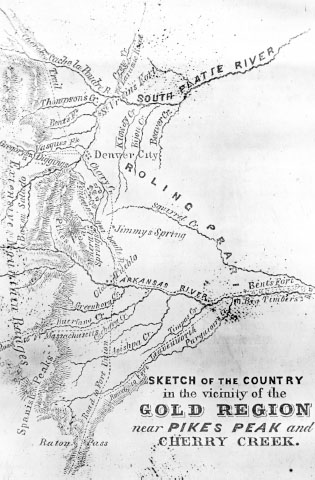
Although not to scale, this circa 185861 map depicts the various trails to Denver City, the all-important rivers and springs and the places of trade. Bents Fort, on the southeastern edge of the map, was strategically placed to maximize trading with various Native American tribes. Courtesy Special Collections, Colorado College.
Naturally, competition was fierce as each town vied for business opportunities, but in the end they saw reason. On a fine spring evening in April 1860, the two towns became one during a candlelit ceremony, and Denver City was born.
Buildings sprang up at an alarming rate, with about 1,000 people living in roughly 160 homes. Some were built adobe style, others of log and frame, but none was painted. Watching with interest were the American Indians (Utes and the Arapahos) who for centuries had camped along the creek and knew its history. They warned the settlers not to build too close to the riverthat the little trickle of water in Cherry Creek could suddenly become a raging torrentbut their advice was ignored. Only later did the pioneers realize their mistake as Cherry Creek flooded time and time again, with significant loss of lives and property.

At first, the Native Americans made the pioneers welcome, but as more settlers arrived, tensions rose. Nine members of the Ute tribe pose for the photograph, all apparently armed. One man (rear left) brandishes a rifle and a handgun.
Next page
